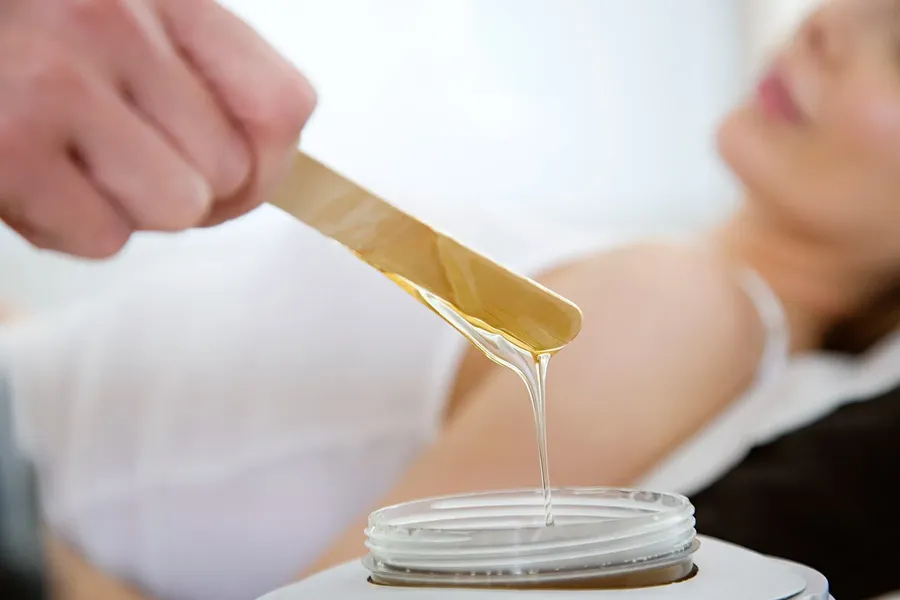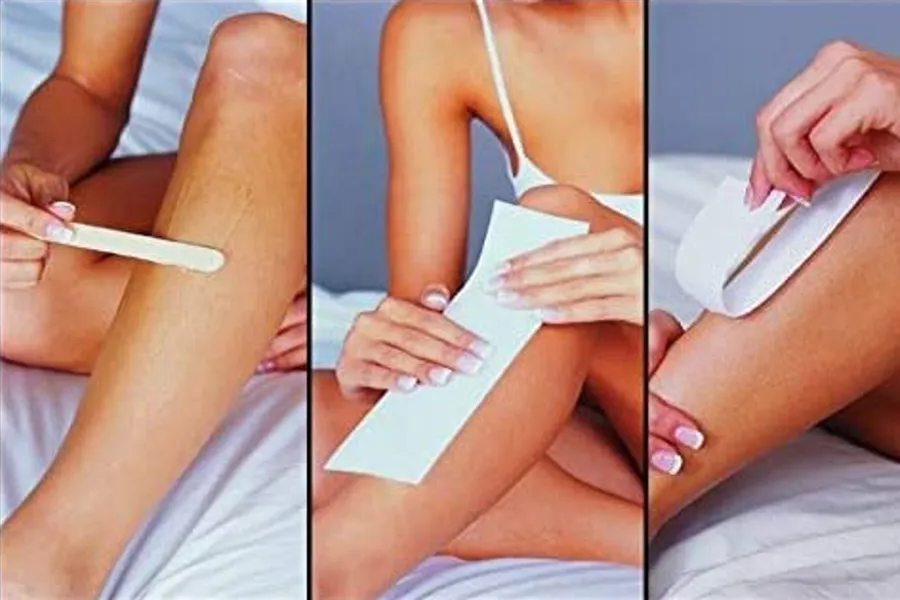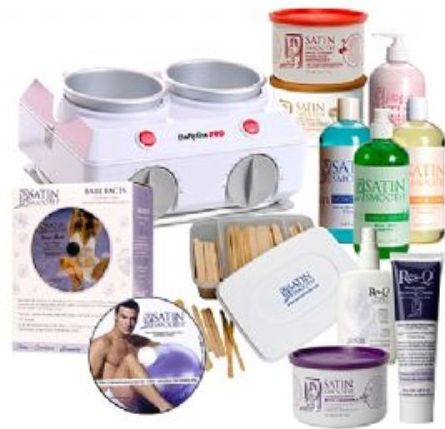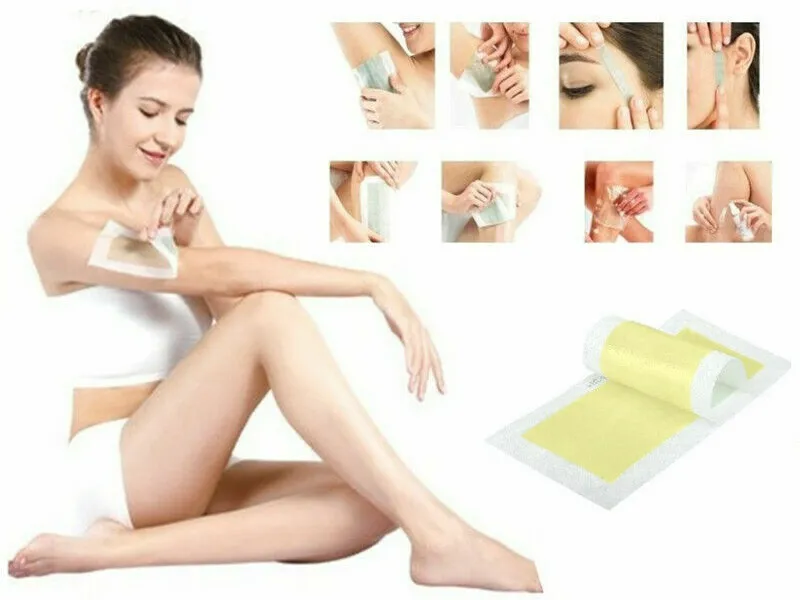Who Can Use Wax Hair Removal Safely: Your Complete Safety and Eligibility Guide
Understanding who can safely use wax hair removal is crucial for preventing injuries, adverse reactions, and ensuring positive experiences with this popular hair removal method. While waxing is generally safe for most people, certain medical conditions, medications, skin types, and life circumstances require special consideration or complete avoidance of waxing procedures.
Most healthy adults can safely use wax hair removal, but those with certain medical conditions, taking specific medications, or having active skin issues should exercise caution or avoid waxing entirely. Pregnant women, people with diabetes, and those using retinoids require special considerations and often professional consultation.
Whether you’re considering different types of wax hair removal for the first time or evaluating the safety of your current routine, this comprehensive guide will help you determine if waxing is appropriate for your specific situation. We’ll explore medical considerations, age factors, skin conditions, and provide clear guidelines for making informed decisions about wax hair removal safety.
Medical Conditions That Affect Waxing Safety
Diabetes and Blood Sugar Considerations
Diabetes significantly impacts waxing safety due to the condition’s effects on skin healing, circulation, and infection resistance. People with diabetes face increased risks that require careful evaluation before attempting any waxing procedures.
Healing Complications: Diabetic skin heals more slowly than normal, increasing the risk of infection and prolonged irritation after waxing. Even minor skin trauma from home waxing procedures can lead to complications that persist longer than expected.
Circulation Issues: Poor circulation, common in diabetes, reduces the skin’s ability to recover from waxing trauma. Areas with compromised circulation, particularly the lower legs and feet, may be completely unsuitable for waxing.
Infection Risk: Diabetics have increased susceptibility to bacterial and fungal infections. The temporary opening of hair follicles during waxing creates potential entry points for pathogens.
Professional Consultation Required: Anyone with diabetes should consult their healthcare provider before beginning any waxing routine. Many dermatologists recommend professional services over DIY approaches for diabetic patients who receive medical clearance.
Autoimmune Conditions and Immune System Considerations
Autoimmune conditions create complex considerations for waxing safety, as these conditions affect the body’s ability to respond appropriately to skin trauma and heal effectively.
Lupus Considerations: People with lupus often experience increased skin sensitivity and may have areas of compromised skin integrity. The stress of waxing can potentially trigger flares in some individuals.
Rheumatoid Arthritis: While RA primarily affects joints, many patients take medications that suppress immune function, increasing infection risks from waxing procedures.
Inflammatory Skin Conditions: Conditions like psoriasis, eczema, or dermatitis create areas where waxing is absolutely contraindicated due to active inflammation and compromised skin barriers.
Circulatory and Vascular Conditions
Proper blood circulation is essential for safe waxing and optimal healing. Various circulatory conditions can significantly impact waxing safety.
Varicose Veins: Areas with prominent varicose veins should be avoided entirely during waxing. The trauma can worsen existing vein problems and cause complications.
Blood Clotting Disorders: Conditions affecting blood clotting or people taking blood-thinning medications face increased risks of bruising and bleeding from waxing procedures.
Peripheral Vascular Disease: Reduced circulation to extremities makes these areas poor candidates for waxing due to delayed healing and increased complication risks.
Medications That Impact Waxing Safety
Topical Medications and Skin Treatments
Many topical medications significantly increase skin sensitivity and can lead to serious complications when combined with waxing procedures.
Retinoids and Retinol Products: These vitamin A derivatives thin the skin and increase sensitivity dramatically. Waxing sensitive areas becomes extremely risky when using retinoids, often resulting in skin tearing or severe irritation.
Prescription Acne Medications: Products containing tretinoin, adapalene, or tazarotene require complete cessation 5-7 days before waxing. Many dermatologists recommend avoiding waxing entirely while using these medications.
Alpha Hydroxy Acids (AHAs) and Beta Hydroxy Acids (BHAs): Regular use of chemical exfoliants increases skin sensitivity. Users should discontinue these products 2-3 days before waxing.
Benzoyl Peroxide: This common acne treatment can increase skin sensitivity and should be avoided in areas to be waxed for several days prior to treatment.
Oral Medications with Waxing Implications
Certain oral medications affect skin integrity, healing capacity, or pain sensitivity, all of which impact waxing safety.
Accutane (Isotretinoin): Perhaps the most significant contraindication for waxing. Accutane use requires avoiding waxing for at least 6 months after discontinuation due to severe skin thinning effects.
Antibiotics: Some antibiotics increase photosensitivity and can affect skin healing. Tetracyclines, in particular, can increase skin fragility.
Blood Thinners: Warfarin, heparin, and newer anticoagulants increase bruising and bleeding risks from waxing procedures.
Corticosteroids: Long-term steroid use, whether oral or topical, thins skin and impairs healing, making waxing more risky.
Chemotherapy Drugs: Cancer treatments often affect skin integrity and healing capacity, requiring medical clearance before any cosmetic procedures.
| Medication Category | Examples | Waiting Period | Risk Level |
|---|---|---|---|
| Retinoids | Tretinoin, Adapalene, Retinol | 5-7 days | High |
| Accutane | Isotretinoin | 6+ months after stopping | Extreme |
| Chemical Exfoliants | AHA, BHA, Glycolic Acid | 2-3 days | Medium |
| Blood Thinners | Warfarin, Aspirin | Consult physician | High |
| Antibiotics | Tetracycline, Doxycycline | Complete course + 3 days | Medium |
Age-Related Considerations for Waxing Safety
Teenage and Adolescent Waxing
The teenage years present unique considerations for waxing safety, involving both physical and emotional readiness factors.
Skin Sensitivity: Adolescent skin is often more sensitive than adult skin, requiring gentler waxing techniques for beginners and careful product selection.
Hormonal Fluctuations: Teenage hormonal changes can affect skin sensitivity and healing capacity. Many teens find certain times of their menstrual cycle more comfortable for waxing.
Parental Guidance: Minors should have parental involvement in waxing decisions, particularly for sensitive areas or when considering professional services.
Educational Component: Teenagers benefit from comprehensive education about proper technique, safety, and realistic expectations before beginning waxing routines.
Professional vs. DIY: Many experts recommend professional services for teenagers’ first waxing experiences to ensure proper technique and safety education.
Adult Considerations by Age Group
Young Adults (18-30): Generally have optimal skin healing capacity and fewer medical contraindications, making this the ideal age group for learning proper home waxing techniques.
Middle Age (30-50): May experience hormonal changes affecting skin sensitivity, particularly women approaching or experiencing menopause. Pregnancy considerations become relevant for this age group.
Mature Adults (50+): Often experience thinner, more fragile skin requiring gentler techniques and possibly different wax formulations. Increased likelihood of medications that affect waxing safety.
Elderly Waxing Considerations
Older adults face unique challenges that require careful evaluation before waxing:
Skin Fragility: Aging skin becomes thinner and more fragile, increasing risks of tearing or bruising during waxing procedures.
Medication Interactions: Higher likelihood of taking medications that contraindicate waxing or require special precautions.
Healing Capacity: Slower healing times may extend recovery periods and increase complication risks.
Circulation Issues: Age-related circulation problems may affect certain body areas’ suitability for waxing.
Pregnancy and Waxing Safety
Pregnancy Considerations by Trimester
Pregnancy creates unique considerations for waxing safety that change throughout the gestational period.
First Trimester: Many women experience increased skin sensitivity due to hormonal changes. Morning sickness and fatigue may make waxing sessions more challenging.
Second Trimester: Generally considered the safest time for waxing during pregnancy, with hormones stabilizing and energy levels improving.
Third Trimester: Physical limitations may make certain positions difficult or impossible. Increased blood volume can lead to more bleeding and bruising.
Hormonal Changes and Skin Sensitivity
Pregnancy hormones significantly affect skin characteristics and waxing experiences:
Increased Sensitivity: Higher hormone levels often increase skin sensitivity, making waxing more uncomfortable than usual.
Skin Pigmentation: Pregnancy can cause darkening of certain skin areas, which may be more prone to irritation after waxing.
Hair Growth Changes: Some women experience increased or decreased hair growth during pregnancy, affecting waxing schedules and effectiveness.
Professional vs. Home Waxing During Pregnancy
Professional Advantages: Experienced estheticians can adapt techniques for pregnant clients and ensure proper positioning and safety.
Home Waxing Considerations: Choosing appropriate wax products becomes even more important during pregnancy, with preference for gentle, natural formulations.
Areas to Avoid: Many professionals recommend avoiding certain sensitive areas during pregnancy, particularly in the later trimesters.
Medical Clearance: Some healthcare providers prefer to clear waxing activities, particularly for high-risk pregnancies.
Skin Type and Condition Considerations
Sensitive Skin Identification and Management
Determining whether you have sensitive skin is crucial for safe waxing experiences.
Characteristics of Sensitive Skin:
- Frequent reactions to cosmetic products
- Easy irritation from environmental factors
- History of eczema, dermatitis, or allergic reactions
- Thin or fair skin that shows redness easily
Testing Protocols: Always perform patch tests 24-48 hours before full waxing sessions, especially when trying new products or techniques.
Product Selection: Sensitive skin requires hypoallergenic, fragrance-free formulations. Hard wax often proves gentler than soft wax for sensitive individuals.
Technique Modifications: Sensitive skin may require smaller sections, gentler application, and more frequent aftercare applications.
Active Skin Conditions
Certain active skin conditions absolutely contraindicate waxing:
Sunburn: Never wax sunburned skin. Wait until skin has completely healed and returned to normal coloration.
Cuts and Abrasions: Any open wounds in the waxing area require complete healing before treatment.
Rashes and Irritation: Active dermatitis, allergic reactions, or unexplained rashes require medical evaluation before waxing.
Infections: Bacterial, viral, or fungal infections must be completely resolved before waxing.
Skin Conditions Requiring Medical Clearance
Moles and Skin Growths: Large or irregular moles should be avoided during waxing. Any changing skin growths require dermatological evaluation.
Skin Cancer History: People with skin cancer history should have dermatological clearance before beginning any cosmetic procedures.
Keloid Tendency: Individuals prone to keloid scarring may face increased risks from waxing trauma.
Special Populations and Considerations
Athletes and Active Individuals
Athletic activities create specific considerations for waxing safety and timing.
Timing Considerations: Schedule waxing to allow 24-48 hours before intense training or competition to allow skin recovery.
Sweat and Friction: Athletes face increased risks of irritation and ingrown hairs due to sweating and clothing friction.
Hygiene Importance: Maintaining exceptional hygiene becomes even more critical for athletes due to increased exposure to bacteria in gym environments.
Performance Impact: Some athletes prefer waxing for performance benefits, while others find the temporary sensitivity affects their training.
People with Disabilities
Physical or cognitive disabilities require special considerations for safe waxing:
Mobility Limitations: Physical disabilities may affect positioning for certain waxing areas, potentially requiring professional assistance or adaptive techniques.
Communication Needs: Cognitive disabilities may require simplified explanations and additional support during waxing procedures.
Sensory Issues: Some disabilities affect pain perception or the ability to communicate discomfort, requiring extra caution and monitoring.
Caregiver Involvement: Many individuals with disabilities benefit from caregiver assistance in maintaining safe waxing routines.
Transgender and Gender-Diverse Individuals
Hormone Therapy Effects: Hormone replacement therapy can affect skin sensitivity, hair growth patterns, and healing capacity.
Body Dysphoria Considerations: Waxing may be particularly important for some transgender individuals, but body dysphoria can make the process emotionally challenging.
Professional Sensitivity: Finding knowledgeable, sensitive professionals becomes particularly important for transgender clients.
Safety Prioritization: The emotional importance of hair removal should not override safety considerations regarding medical conditions or medications.
Mental Health and Psychological Readiness
Anxiety and Stress Considerations
Mental health significantly impacts waxing experiences and safety:
Anxiety Management: High anxiety can increase pain perception and make the waxing process more difficult. Relaxation techniques and gradual exposure help many people.
Stress Impact on Healing: Chronic stress can impair skin healing and increase infection risks.
Realistic Expectations: Mental preparation includes understanding what to expect in terms of discomfort, results, and recovery time.
Body Dysmorphia and Obsessive Behaviors
Healthy vs. Unhealthy Motivations: Regular grooming is normal, but obsessive hair removal behaviors may indicate underlying psychological issues requiring professional support.
Professional Guidance: Mental health professionals can help individuals develop healthy relationships with body image and grooming routines.
Balanced Approach: Waxing should enhance confidence, not become a source of anxiety or compulsive behavior.
Geographic and Environmental Factors
Climate Considerations
Environmental factors significantly affect waxing safety and comfort:
Hot, Humid Climates: Increased sweating and humidity can exacerbate post-waxing irritation and increase infection risks.
Cold, Dry Climates: Low humidity can increase skin dryness and sensitivity, requiring modified aftercare routines.
Seasonal Timing: Many people prefer certain seasons for waxing based on clothing choices and activity levels.
Sun Exposure and UV Considerations
Pre-Waxing Sun Exposure: Avoid waxing recently sunburned or heavily tanned skin due to increased sensitivity and complications risks.
Post-Waxing Protection: Freshly waxed skin requires protection from sun exposure for several days to prevent hyperpigmentation.
Vacation Timing: Plan waxing sessions 2-3 days before beach vacations to allow skin recovery while maintaining smooth results.
Professional vs. Self-Assessment Guidelines
When to Seek Professional Consultation
Certain situations require professional medical or esthetic consultation:
Complex Medical History: Multiple medical conditions or medications require professional evaluation of waxing safety.
Previous Adverse Reactions: History of severe reactions to cosmetic procedures warrants professional guidance.
Prescription Medications: Many prescription drugs require medical clearance before cosmetic procedures.
Pregnancy Complications: High-risk pregnancies or complications require medical approval for elective procedures.
Self-Assessment Tools
Medical History Review: Comprehensive review of current medications, medical conditions, and previous cosmetic procedure experiences.
Skin Assessment: Honest evaluation of skin type, sensitivity, and current condition.
Lifestyle Factors: Consideration of activity level, stress, and environmental exposures that might affect waxing safety.
Risk-Benefit Analysis: Weighing the importance of hair removal against potential risks and complications.
Red Flags Requiring Medical Clearance
Active Medical Treatment: Current treatment for any medical condition affecting skin or healing.
Recent Procedure History: Recent cosmetic procedures, surgeries, or medical treatments in the area to be waxed.
Unexplained Skin Changes: New moles, rashes, or skin changes require medical evaluation before cosmetic procedures.
Medication Changes: New medications or dosage changes may affect waxing safety.
Creating a Personal Safety Plan
Pre-Waxing Safety Checklist
Developing a systematic approach to safety assessment:
Medical Review: Regular review of medications, medical conditions, and any changes that might affect waxing safety.
Skin Assessment: Pre-session evaluation of skin condition, checking for contraindications like cuts, rashes, or irritation.
Product Review: Ensuring all products are appropriate for your skin type and current condition.
Equipment Safety: Regular inspection and maintenance of home waxing equipment for safety and effectiveness.
Emergency Preparedness
Recognition of Complications: Understanding signs of allergic reactions, infections, or other complications requiring immediate attention.
First Aid Supplies: Maintaining appropriate supplies for managing minor complications and providing immediate care.
Professional Contacts: Having contact information for healthcare providers familiar with cosmetic procedure complications.
Emergency Protocols: Clear understanding of when to seek immediate medical attention vs. routine follow-up care.
Long-term Safety Monitoring
Regular Reassessment: Periodic review of your safety status as medical conditions, medications, and life circumstances change.
Technique Improvement: Ongoing education about proper waxing techniques and safety innovations.
Professional Relationships: Maintaining relationships with qualified professionals for consultation and treatment when needed.
Special Considerations for Different Body Areas
Facial Waxing Safety
Facial skin requires extra consideration due to its visibility and sensitivity:
Product Selection: Use only products specifically formulated for facial use, avoiding body wax formulations that may be too harsh.
Patch Testing: Facial patch testing is particularly important due to the visibility of potential reactions.
Professional Preference: Many experts recommend professional services for facial waxing due to the precision required and potential for visible complications.
Sun Sensitivity: Facial skin is more prone to post-waxing pigmentation changes, particularly with sun exposure.
Intimate Area Considerations
Bikini area waxing requires the highest level of safety consideration:
Hygiene Critical: Exceptional hygiene standards are essential due to the area’s proximity to mucous membranes and potential for infection.
Professional Recommendation: Many healthcare providers recommend professional services for intimate areas due to safety and hygiene considerations.
Medical Clearance: Some medical conditions particularly contraindicate intimate area waxing.
Gradual Approach: Starting with less extensive intimate area waxing and gradually increasing area as comfort and experience build.
Lower Extremity Considerations
Legs and feet present unique safety considerations:
Circulation Assessment: Poor circulation in lower extremities may contraindicate waxing, particularly in diabetic individuals.
Varicose Vein Avoidance: Areas with prominent varicose veins should be completely avoided during waxing procedures.
Standing Tolerance: Some medical conditions affect the ability to stand for extended periods required for leg waxing.
Building Safe Waxing Practices
Education and Skill Development
Comprehensive Learning: Understanding not just technique but also safety, anatomy, and complication management.
Progressive Skill Building: Starting with simple, low-risk areas before advancing to more complex or sensitive zones.
Ongoing Education: Staying current with safety recommendations, new products, and technique improvements.
Professional Learning: Considering professional training or workshops to improve safety and effectiveness.
Safety Culture Development
Priority on Safety: Always prioritizing safety over convenience, speed, or cost considerations.
Open Communication: Maintaining honest communication with healthcare providers about cosmetic procedures and any concerns.
Realistic Expectations: Understanding that some individuals may not be appropriate candidates for certain waxing procedures.
Continuous Improvement: Regularly evaluating and improving safety practices based on experience and new information.
Alternative Hair Removal Options
When Waxing Isn’t Appropriate
For individuals who cannot safely use wax hair removal, several alternatives provide effective results:
Shaving: The safest option for most people with medical contraindications, though requiring more frequent maintenance. Learn about waxing vs shaving comparisons to understand the trade-offs.
Depilatory Creams: Chemical hair removal may be appropriate for some people who cannot wax, though skin sensitivity testing remains crucial.
Laser Hair Removal: Professional laser treatments may be appropriate for some individuals who cannot wax, though medical clearance is often required.
Professional Electrolysis: Individual hair follicle treatment may be suitable for small areas when other methods are contraindicated.
Temporary vs. Permanent Solutions
Immediate Needs: Understanding which hair removal methods can provide immediate results when waxing is not appropriate.
Long-term Planning: Considering permanent hair removal options for individuals with chronic contraindications to waxing.
Combination Approaches: Using different methods for different body areas based on individual safety considerations.
Professional Consultation: Working with dermatologists or estheticians to develop comprehensive hair removal plans that prioritize safety.
Conclusion: Making Informed Decisions About Waxing Safety
Determining who can use wax hair removal safely requires careful consideration of medical conditions, medications, skin type, age, and individual circumstances. While waxing is generally safe for healthy adults, the potential for complications makes thorough safety assessment essential for everyone considering this hair removal method.
The key to safe waxing lies in honest self-assessment, appropriate medical consultation when indicated, and prioritizing safety over convenience or aesthetic desires. Understanding your individual risk factors allows you to make informed decisions about whether waxing is appropriate for your situation and, if so, which precautions and modifications might be necessary.
Remember that safety considerations can change over time as medical conditions develop, medications change, or life circumstances evolve. Regular reassessment of your waxing safety status ensures that you continue to make appropriate decisions about this popular hair removal method.
For individuals who cannot safely use wax hair removal, numerous alternative methods can provide effective results. The goal is finding a hair removal approach that meets your aesthetic goals while maintaining your health and safety as the top priority.
If you have any doubts about your suitability for waxing, consulting with healthcare providers or experienced estheticians can provide valuable guidance. Professional consultation is particularly important for individuals with medical conditions, those taking medications, pregnant women, or anyone with a history of adverse reactions to cosmetic procedures.
Safe waxing practices benefit everyone by preventing complications, ensuring positive experiences, and maintaining the reputation of waxing as an effective, accessible hair removal method. By understanding and respecting individual limitations and contraindications, we can help ensure that waxing remains a safe option for those who can appropriately use this method.
Before beginning any waxing routine, review our comprehensive safety guidelines and consider consulting with healthcare providers if you have any medical concerns. For more information about safe hair removal options, explore our complete hair removal guide to find the method that’s right for your individual needs.
Essential Safety Resources:






